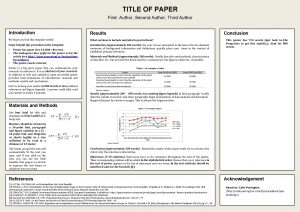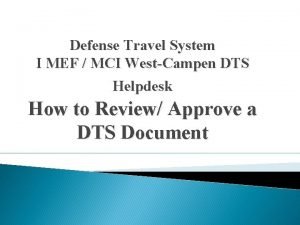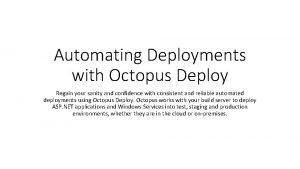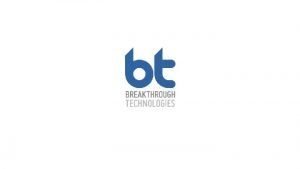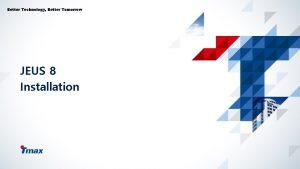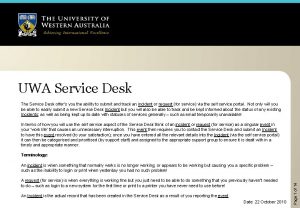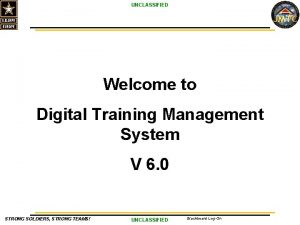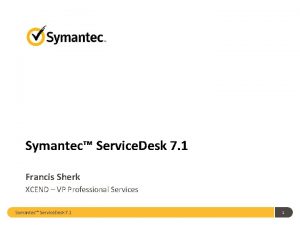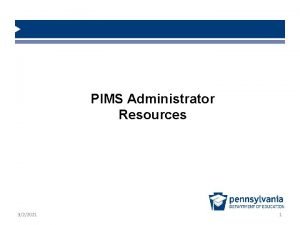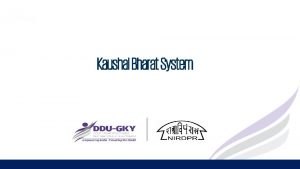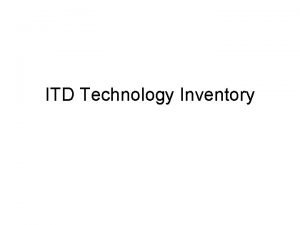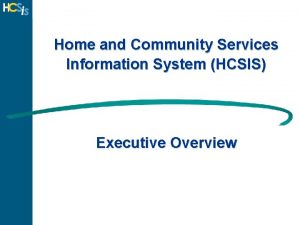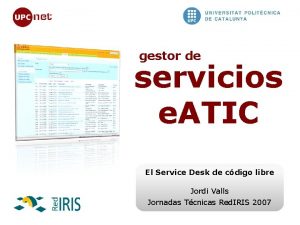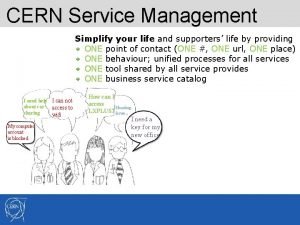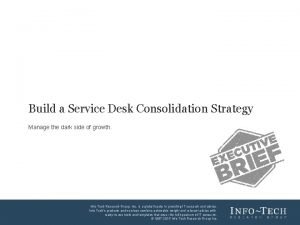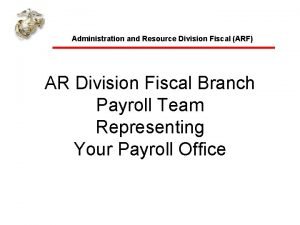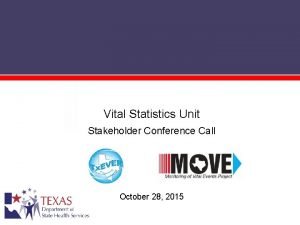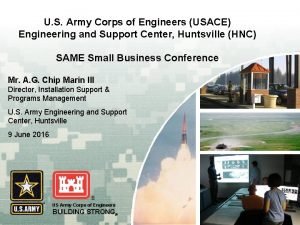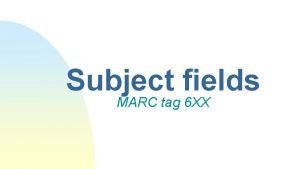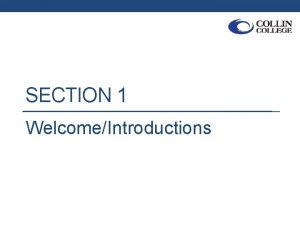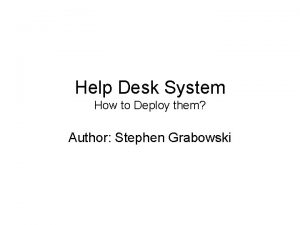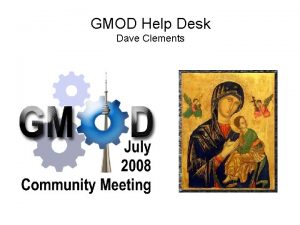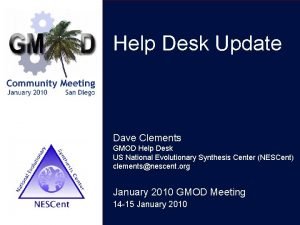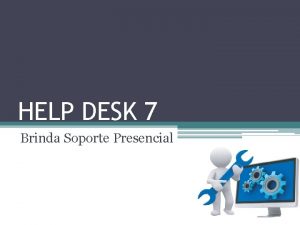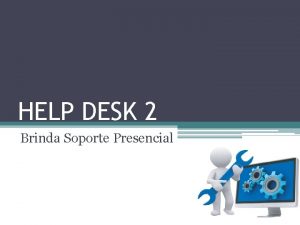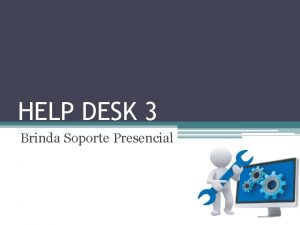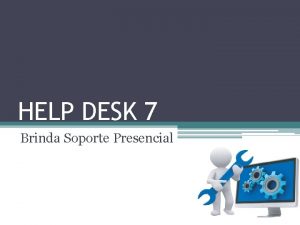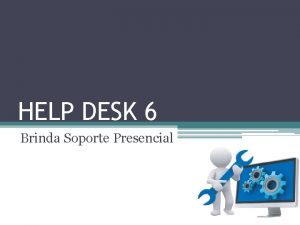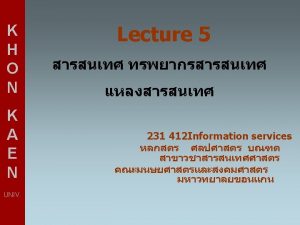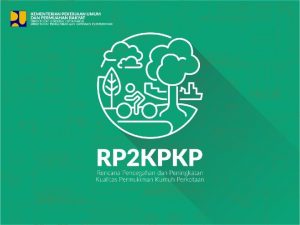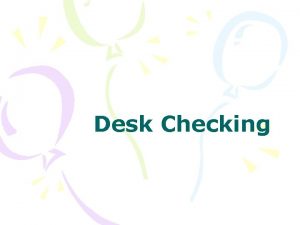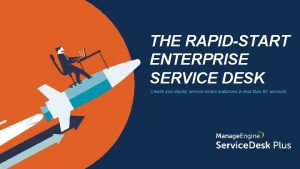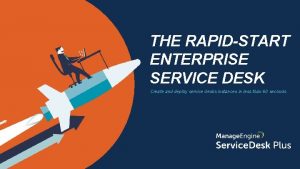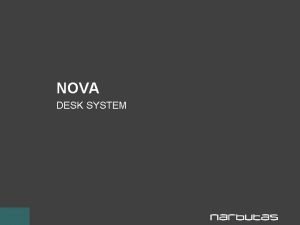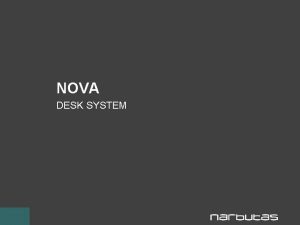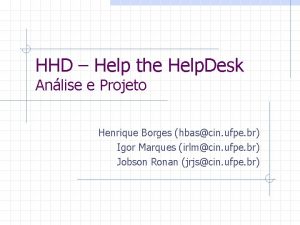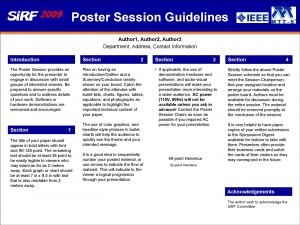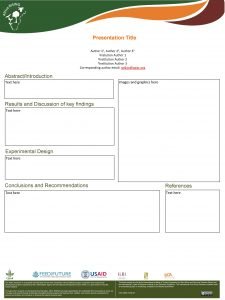Help Desk System How to Deploy them Author





























- Slides: 29

Help Desk System How to Deploy them? Author: Stephen Grabowski

The Three Service Levels of a Help Desk System • End User • Hotline (Level 1) • System Administrator, Application Specialists (Level 2) • Maintenance and OEMs (Level 3)

Benefits of a Help Desk • Technicians do not have to re-derive solutions to problems – This wastes company resources

Structure and Representation of a Help Desk System • Attribute Value Pair – Good for answering trivial question – Good when users of the help desk system are inexperienced

Structure and Representation of a Help Desk System Cont. • Object Oriented Representation – Structure of the technical system to be diagnosed can be represented in the necessary degree of detail – Symptoms can be clearly related to the object to which they belong to – The semantics of the problem description can be captured and used for selecting appropriate prior experience – A high retrieval accuracy can be achieved – Discussed general OO representation in class

Case Model (Problem) • The Topic – The area in which the problem is located • hardware, software, network, printing service etc… • The Subject – The physical object that the failure is related to • Specific software, printer, router, etc… • The Behavior – The way the subject behaves • Wrong print size, screeching sound, no dial tone, etc…

Case Model (Situation) • A set of attribute-value pairs describing symptoms that are important to diagnose the fault – Contain the minimum amount of info required to diagnose the problem (independence, completeness, minimalist)

Case Model (Solution) • Contains the fault and the remedy – Composed of text or hypertext links – Can include links to more detail description – Can be a result of various situations • Each complete path from problem to solution becomes its own case

Kinds of Cases • Approved cases • Opened cases (everyone can see) • These case are separated into a case buffer (opened) and a main case base (approved)

User and Roles • Help desk operator – Lowest access rights – Use application on a regular basis to solve problems – Case retrieval and case acquisition • Experience author – Responsible for case maintenance and case approval – Checks for redundancy and consistency • Experience base administrator – Creates and maintains the domain and case model – Administer users and access rights

Client/Server Architecture • Allows all users to get the same up to date information • Eases the maintenance of the domain model and the case base


Retrieving Problem Solutions with Homer • Two modes – Manual • User can enter as much information about a problem as wanted and then invokes a retrieval method • All matching case are retrieved – Automatic • The system retrieves matching cases after every item entered • Solutions are displayed in the bottom view by decreasing relevance (CCBR)

Feedback • Can be retained by pressing the retain button – Opens a case entry interface • Operator can make final modifications • Document why the case should be keep

Solutions

Case Browser • Used by the experience author to manage the case base – Case creation – Case copy – Delete case – Approve case



The Development of the Homer System • Managerial Processes – Goal Definition (realistic) • Hard criteria (measurable) – Problem solution quality » First call resolution rate, average cost of solution – Process quality » Avg time to solve problem, avg # of escalation – Organizational quality » Speed up in operator training, flexibility of training • Soft criteria (subjective) – End-user satisfaction » Availability of the help desk, friendliness – Help-desk operator satisfaction » Workload, work atmosphere, repetitiveness – Corporate aspects » Preservation of knowledge

The Development of the Homer System Cont. – Awareness creation (operators & managers) • Sharing knowledge will cause benefit in the future – Will be able to solve more problems then they currently can • Experience management is based on an established technology (M) • Needs continuous management support (M) – Tool Selection (consider long term, $) • Operating system • The complexity of the technical domain (home, networked applications) • Experience of operators and users • Organization of help desk • Project goals

The Development of the Homer System Cont. • Organizational Process During System Development – Project team and initial domain selection • • • Help desk personal experienced in domain System implementers Keep members constant Test users (experienced and not) Domain – Training the project team • Trained in modeling, filling, and maintaining the knowledge in the system

The Development of the Homer System Cont. – Development of knowledge acquisition and utilization • After development these need to be analyzed – Knowledge sources and formats – Processes that allow efficient acquisition – Qualification of personal • Three roles – Help-desk operator – Experience Author – Experience base administrator

The Development of the Homer System Cont. • Technical processes during development – General IT related processes • Similar to other IT projects in many aspects • UI and integration are different – UI needs to present the right info, at the right moment, at the correct level of detail – Needs to be developed in accordance with user level (E, 1, 2, 3) – Needs to have interface to a different user identification database – Trouble ticket system (should be integrated with UI) » Record, manage, trace, escalate and analyze received calls

The Development of the Homer System Cont. • Initial knowledge acquisition – Three goals • Training the project team in knowledge acquisition • Initializing the knowledge in the system • Collecting enough help-desk cases

The Use of the Homer System • Managerial processes during system use • Organizational processes during system use • Knowledge utilization and acquisition process – Training the help desk operators

The Use of the Homer System Cont. • Technical processes during system use – Continuous knowledge acquisition and maintenance • Case buffer -> main base – Contain info necessary and sufficient to solve a problem – Described on a level that the end user can understand • Verify case – Correct, relevant, applicable • Before entered into case base – – – It’s a viable alternative that does not exist in base Can it be subsumed by another case Can be combined with another case to create a new one Will case cause an inconsistency Case already available in case base

Overview of the Design and Maintenance of a Help-Desk system • • Project planning and initialization Implementation of a rapid prototype Evaluation and revision of the prototype Implementation of the integrated casebased help-desk support system • Evaluation and revision of the case-based help-desk support system • Utilization of the case-based help-desk support systems

Evaluation of Homer • Performed by INRECA II – Benefits for help desk operators • 102 problems of which 45 trivial or directed to the wrong help desk Homer solved 18 (32%) • Time to solve without = 141 min with = 9 min • Results better than expected

Summary • Help desk systems – help solve problems faster – give more people more knowledge • Building – long and difficult – need to convince people go give up their knowledge • Maintaining – Requires constant maintenance
 First author second author third author
First author second author third author Defense travel system
Defense travel system Deploy happiness
Deploy happiness Octopus rest api
Octopus rest api Code commit code build code deploy
Code commit code build code deploy Sanity deploy
Sanity deploy Aws drupal ami
Aws drupal ami Octopus automatic release creation
Octopus automatic release creation Jeus7 webadmin 기동
Jeus7 webadmin 기동 Octopus deploy training
Octopus deploy training Resource based view example
Resource based view example 3 application delivery approaches that accenture recommends
3 application delivery approaches that accenture recommends Uwa helpdesk
Uwa helpdesk Te&o army
Te&o army Symantec servicedesk
Symantec servicedesk Pims help desk
Pims help desk Kaushal bharat ddugky
Kaushal bharat ddugky Itd help desk
Itd help desk Hicsis
Hicsis Helpdesk czu
Helpdesk czu Upc help desk
Upc help desk Otrs ticketing system
Otrs ticketing system Cern mmm services
Cern mmm services It consolidation strategy
It consolidation strategy Sldcada
Sldcada Txever help desk
Txever help desk Ace it usace
Ace it usace Marc tag 650
Marc tag 650 Alma helpdesk
Alma helpdesk Collin college help desk
Collin college help desk
